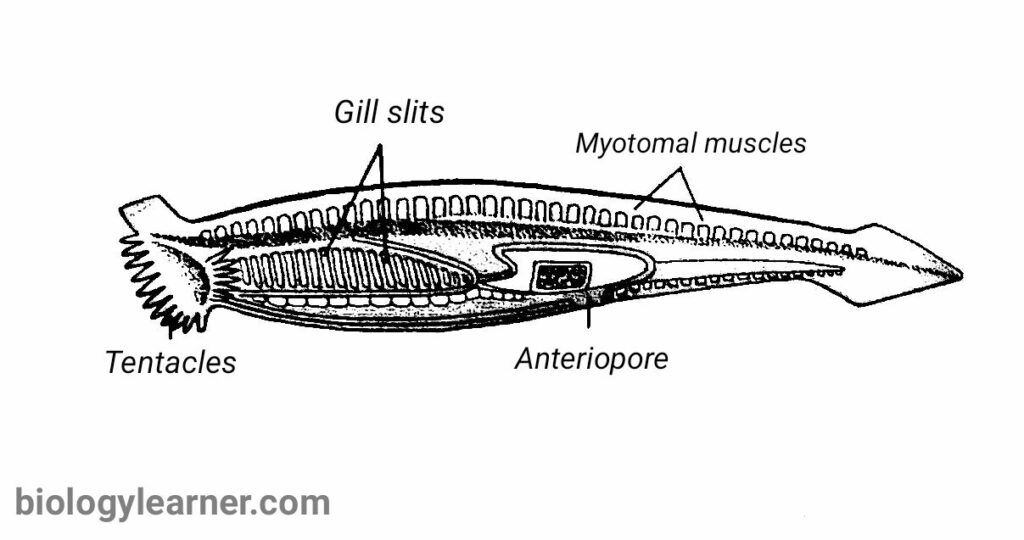Cephalochordata (Gr., kephale, head; chorde, cord) is a sub-phylum within the phylum Chordata. The animals in this group are small, marine invertebrates. They are commonly called lancelets or amphioxi.
Cephalochordates show many typical chordate features, including a notochord, a dorsal hollow nerve cord, pharyngeal slits, and a post-anal tail.
Definition of Cephalochordata
The sub-phylum Cephalochordata comprises a group of marine animals that exhibit major chordate features, characterized by a notochord extending from the tip of the tail to the head.

Characteristics of Cephalochordata
- Cephalochordates are small marine invertebrates, found mainly in shallow water.
- The body is fish-like, slender, translucent, and tapered at both ends, with a post-anal tail. Due to the shape of the body, they are often called lancelets.
- Median fins are present but lack paired fins.
- Epidermis is single-layered.
- Body muscles are arranged on both sides of the body. These are V-shaped and called myotomes or myomeres.
- The rod-like notochord extends from the tip of the tail to the region beyond the brain. Hence, this group is named Cephalochordata.
- The ventral mouth is surrounded by small tentacles.
- The pharynx is large and comprises numerous gill slits, opening into the atrium.
- The circulatory system is closed-type and well-developed without a specialized heart. Blood is colourless and lacks respriratoy pigment.
- Excretion occurs by protonephridia with solenocytes.
- Presence of a dorsal hollow nerve cord, without brain and ganglia. The nerve cord runs dorsally to the notochord and opens to the exterior through an anterior neuropore.
- Sexes are separate. Gonads are several pairs and ductless.
- Fertilization occurs externally.
- Development is indirect, including a free-swimming, asymmetrical planktotrophic larva.
Examples
Branchiostoma (Amphioxus), Asymmetron.
Classification of Cephalochordata
The sub-phylum consists of only a single class Lepitocardii with two genera.
- Class 1. Leptocardii
- Order 1. Amphioxiformes
- Family 1. Branchiostomatidae
- Genus 1. Branchiostoma
- Genus 2. Asymmetron
